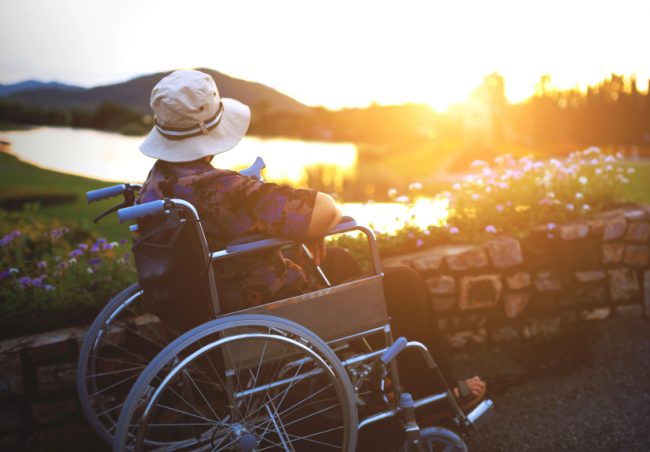Three part series: Medical professional reflects on ‘deaths corridor’
There is a dearth of literature about the societal ramifications of legalising euthanasia. Margaret Somerville, an Australian bioethicist writes that: “The case against euthanasia is much more difficult to promote, not because it is weak—it is not—but because it is much more complex. It requires looking not just to the present but also to our ‘collective human memory’—that is, history—for lessons from the past and to our ‘collective human imagination’ to try to anticipate the full and wider consequences of legalising euthanasia.”
In a three part series, the Catholic Voice presents a selection of reminiscences by François Trufin, a hospital emergency nurse in Belgium.
Part One: Euthanasia, a stage in accepting one’s illness
 A request for euthanasia is not the end of the road. We need to look at it as a new phase, among the other stages of grief, on the way to acceptance. At the end of this process, we hope that the person, with the help of the palliative care team, will be able to die a natural death, having lived their life to the full till the end. A patient who requests euthanasia is usually in the thralls of dread: fear of suffering, of dying, of being a burden… Euthanising them in that distress deprives them of the time to ease their worries and find answers to their questions. Furthermore, it confirms a failure and denies them the hope to overcome it.
A request for euthanasia is not the end of the road. We need to look at it as a new phase, among the other stages of grief, on the way to acceptance. At the end of this process, we hope that the person, with the help of the palliative care team, will be able to die a natural death, having lived their life to the full till the end. A patient who requests euthanasia is usually in the thralls of dread: fear of suffering, of dying, of being a burden… Euthanising them in that distress deprives them of the time to ease their worries and find answers to their questions. Furthermore, it confirms a failure and denies them the hope to overcome it.
The health professional who is aware of this possible care pathway will no longer feel apprehensive around a patient requesting euthanasia; they will take them by the hand and walk alongside them to the end of the road.
[Once] a patient arrived in our department accompanied by her husband. She was about 50 and had so far been living at home, taking 32 medications a day. Convinced that she was a burden to her husband and her two children, she repeated day in day out: ‘Let me go, I want to die, please don’t give me any more medication’.She attempted suicide four times. On the fourth attempt, she pushed herself down the staircase in her wheelchair. Her husband, who loved her deeply, was totally overcome. He was devastated at the thought that he could not prevent her throwing herself down the staircase. To the GP it was clear that she wanted to die and he referred her to the hospital for euthanasia.
When she came in her husband shouted: ‘Don’t let anyone get in our way, she is to be euthanised’. The team started to panic. I went to see the patient and we had a 4-hour conversation with husband and wife. We argued and as I was not agreeing to go ahead with euthanasia, he wanted to take his wife back home and have her referred elsewhere.
I told him: ‘The choice is up to you, but right now, your wife cannot be transported; any movement is extremely painful and we need to take care of her pain first. I guarantee you we will do all we can to make her comfortable. When she is, you can still decide whether you want her to be transferred in order to be euthanised’. Thus, the situation calmed down, the husband decided to leave his wife in our department and we worked together.
Seeing how, with the combined use of painkillers and controlled sedation, his wife rested peacefully in bed, he became convinced that palliative care was effective. A very tactile man, he appreciated the massages with essential oils we gave his wife. We encouraged him to bring the CDs they listened to together.
The two children, both young adults, followed suit, even though they were ill at ease at the start. They feared they might betray their mother’s resolve who had been adamant from the start that she wanted euthanasia. We reassured them saying that she was receiving no more medical treatment and we did nothing to prolong her life, only to make her comfortable.
This lady died peacefully in her husband’s arms, listening to the music they had played at their wedding. After a week, her husband came back, asking to see me. He thanked me with a box of chocolates… and asked whether I could keep a place for him in our palliative care ward when his time came!
The sad thing is that it took 32 medications and four suicide attempts for this woman to be heard and cared for, rather than be the object of therapeutic obstinacy.
- Tomorrow in the Catholic Voice – Part Two: “I had to request euthanasia for people to start taking an interest in me”.
www.mercatornet.com



No doubt one can hear similar stories from, for example, the Palliative Care hospital, St Vincent’s hospital, Sydney, which at its inception was I believe, the largest Palliative Unit in Sydney if not Australia.
The palliative team who worked with my mother allowed her to die peacefully at home with her family around her. We were ever grateful for the care and help that they gave to our mother and the family. That was in 1988. I have never understood why more doctors do not refer terminally ill patients to the palliative care team.